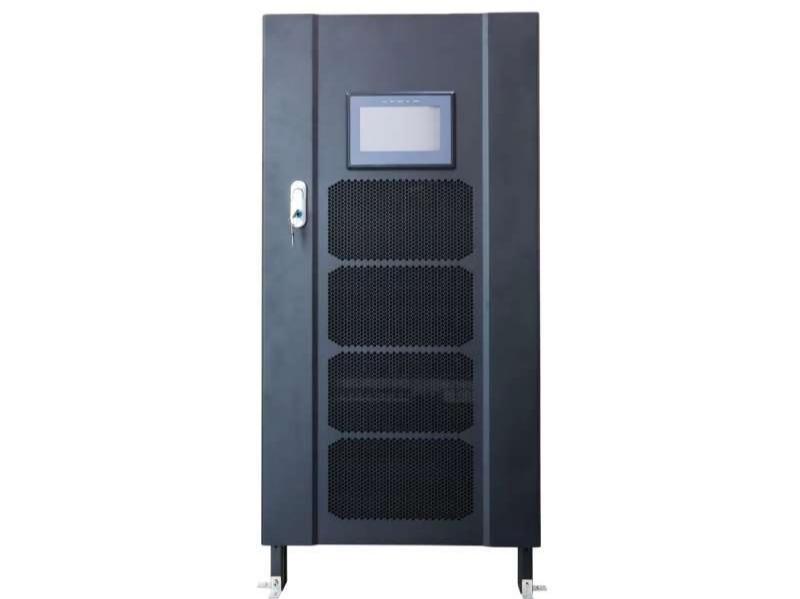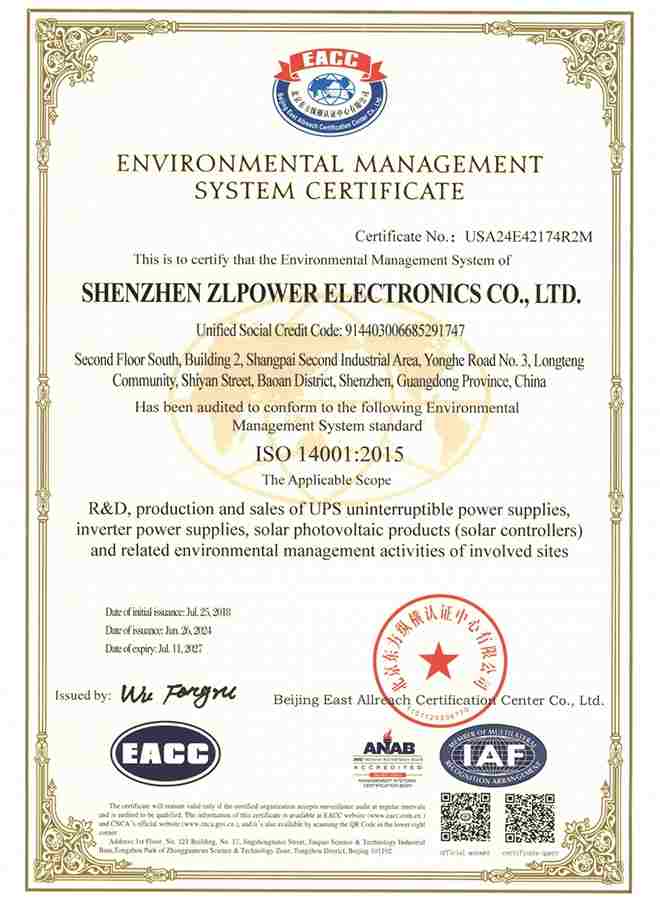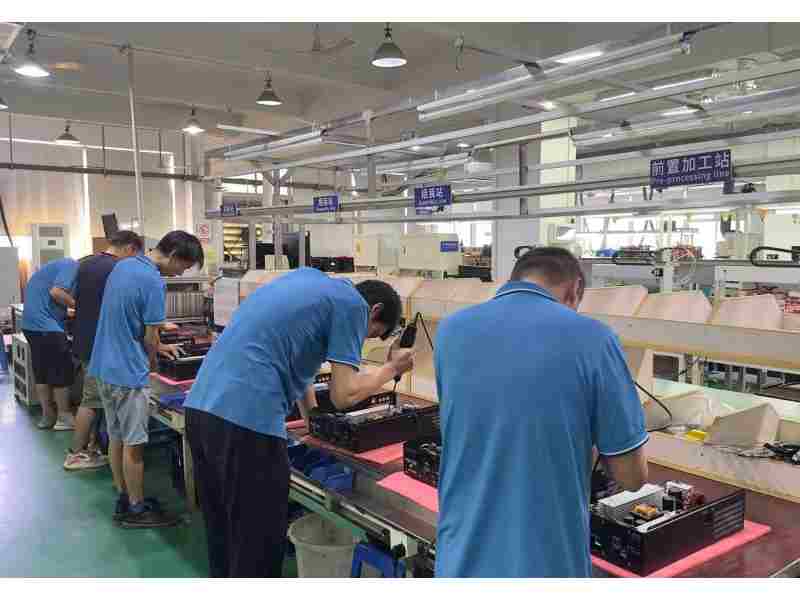

Power-hungry machines such as CNC equipment, industrial pumps, and HVAC systems need a power source that is steady and tough. These systems often behave as inductive loads, which means they pull a lot of current when starting and react badly to sudden voltage changes. To handle that, the best low-frequency UPS units are built with stronger parts and heavy transformers. They can keep motors, compressors, and sensitive controls safe when the grid isn’t stable. Anyone who has worked in a factory knows how a voltage dip can stall a CNC spindle mid-cut or restart a pump right in the middle of a shift — that’s exactly the kind of stress a low-frequency UPS is built to survive.
This guide explains why low-frequency UPS systems matter for these types of loads. It also shows the main features to focus on, then gives a list of reliable models for CNC workshops, pumping stations, and HVAC facilities.
Motors, compressors, and transformers pull a sudden burst of power at startup. This surge—called inrush current—can be five to seven times higher than normal use. If not handled, breakers may trip or parts may overheat. A low-frequency UPS is built with big transformers and capacitors. They can take the hit from this surge without failing.
For example, the GP33 Series Low Frequency Online UPS by ZLPOWER runs from 10kVA to 400kVA, with three-phase input and output. It is designed for heavy-duty inductive loads thanks to its transformer-based core.
Industrial tools often react to even small dips or spikes in voltage. CNC spindles or HVAC controllers may stop mid-task or give wrong readings. A low-frequency UPS with double-conversion keeps voltage steady. It also cuts harmonic distortion (THD), so the output wave is clean.
Some models can even handle a full load jump from 0% to 100% instantly, without switching to bypass. That means your machines keep working smoothly even in sudden demand shifts.
Most low-frequency UPS systems have a built-in isolation transformer. This part separates input from output and lowers electrical noise. For precision gear like CNC lathes or laser cutters, this isolation makes a big difference.
Look for overload capacity ratings. For example, 125% for 10 minutes or 150% for 1 minute. This ensures that short surges from pump or motor starts won’t cause downtime.
Not every plant needs the same runtime. Some only need a few minutes to shut down safely. Others—like a water treatment facility—need hours of backup. Choose a UPS with modular battery packs or external expansion. ZLPOWER’s modular series even lets you swap modules without shutting down.
Good units carry CE, UL, ISO9001, and ISO14001 marks. ZLPOWER has both ISO9001 and ISO14001 certifications for low frequency UPS. Their UPS products are already used in defense, finance, telecom, transport, hospitals, and factories worldwide.

l Model: GP3315KVA – 15KVA/12KW
l Features: Pure sine wave, ±1% voltage regulation, THD <3% (linear), <5% (non-linear)
l Best For: Laser cutting, robotic arms, or CNC machines that need stable precision.
l Model: GP3320KVA – 20KVA/16KW
l Features: High-definition LCD touch display, real-time system monitoring
l Best For: Small to medium workshops with multiple CNC machines needing central backup.
l Model: GP3340KVA – 40KVA/32KW
l Features: Three phase +N+G, handles 100% load imbalance
l Best For: Pumps in irrigation or city water supply that start and stop often.
l Model: GP3360KVA – 60KVA/48KW
l Features: Configurable charging up to 50A, strong turbofan cooling
l Best For: Water treatment or drainage stations that need long run times during blackouts.
l Model: 93M Series Modular Online UPS – Scalable to 900kVA
l Features: Smart Sleep mode that shuts down modules when load is low
l Best For: Large HVAC systems in malls, airports, or hospitals.
l Model: GP3310KVA – 10KVA/8KW
l Features: Double conversion design, input PF 0.95 with filter
l Best For: Building automation, elevators, or local control rooms.
|
Application |
Model |
Capacity |
Output PF |
Key Feature |
|
CNC Precision |
GP3315KVA |
15KVA / 12KW |
0.8 |
±1% Voltage Regulation |
|
Workshop CNC |
GP3320KVA |
20KVA / 16KW |
0.8 |
Real-time Monitoring |
|
Water Pumps |
GP3340KVA |
40KVA / 32KW |
0.8 |
Handles Inrush Current |
|
Continuous Pumping |
GP3360KVA |
60KVA / 48KW |
0.8 |
Adjustable Charge Current |
|
Central HVAC |
93M Modular UPS |
Up to 900kVA |
0.9–1.0 |
Smart Sleep Function |
|
Building Controls |
GP3310KVA |
10KVA / 8KW |
0.8 |
High Input PF |
Add all equipment ratings and don’t forget startup surges.
Pick a UPS with at least 150% overload capacity for short bursts.
Decide if you need only minutes for safe shutdown or longer support for full operations.
Confirm compliance and make sure the maker has local service teams.
ZLPOWER has global partners across Europe, USA, South Africa, and the Middle East.
Low-frequency UPS may cost more upfront but last longer and protect more valuable assets.

For CNC shops, heavy-duty pumps, or complex HVAC, ZLPOWER offers transformer-based UPS units built for tough work. From compact 10kVA gear to massive modular systems up to 900kVA, they have a reliable option. Backed by certifications and global service, ZLPOWER is a trusted partner for businesses needing steady, industrial-grade power.
A: The transformer design makes them handle inrush surges and dips better, which is key for motors and pumps.
A: It isolates input and output, cuts noise, and smooths voltage, so your machines see a clean sine wave.
A: Check batteries, clean vents, and update firmware yearly. This keeps the UPS stable and ready.